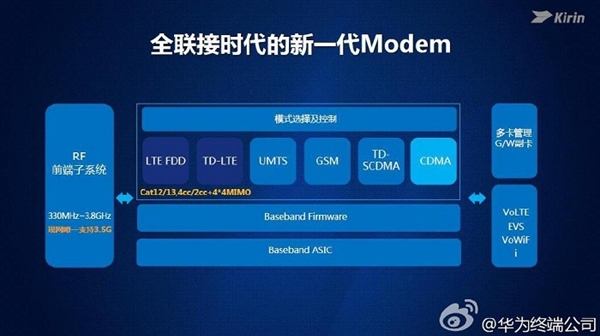To develop mobile processors and get more shares in the mobile phone market, baseband must follow the speed of development. Undoubtedly, the mobile communication market in the future will be taken over by the 5G network. So many manufacturers and operators are currently positively working on the 5G network. As an important part of supporting this network, the baseband, which supports the corresponding network, becomes extremely significant.
Currently, Qualcomm and Intel are actively developing basebands to support 5G networks. Qualcomm has introduced the X50, which is designed for frequencies up to 5Gbps. The popular Snapdragon X20LTE baseband boosts peak theoretical bandwidth to 1.2Gbps and supports upload speeds of up to 150Mbps. Intel’s new finished product is said to support not only 28GHz mmWave but also the 6GHz band.
In the competition for speed, Huawei is not willing to lag behind. When interviewed by foreign media Computerbase, the CMO Peter Zhou of Huawei’s wireless solution department expressed that Hisilicon has been working on a 5G network (including developing relative baseband), and a new Kirin processor that supports this network is also under development, and at present everything goes well, so the relative finished products will be launched in 2019.
According to Kirin processors’ customs in the past, the current Kirin 960 processor will be upgraded to Kirin 970 in the second half of 2017, and then it will be upgraded to Kirin 980 next year. The processor is estimated to change its name (maybe Kirin 990) in 2019, and its performance is absolutely top-level.






